A Summer Getaway
Written by Cyan Fink, DLNHC Inventory Coordinator
Hot town, summer in the city
Back of my neck getting dirty and gritty
Been down, isn’t it a pity?
Doesn’t seem to be a shadow in the city…The Loving Spoonful, Summer in the City

Lehigh Valley Railroad Timetable with advertisement stating that Mauch Chunk is “visited annually by over one hundred thousand pleasure seekers.” Photograph from the David Rumsey Map Collection, David Rumsey Map Center, Stanford Libraries (David Rumsey Historical Map Collection | The Collection)
June brings the official start of summer and with it, the heat and humidity. While the summer heat for us can feel unbearable, we are lucky enough to be able to escape to our air conditioning. However, people of yesteryear had to be a little more creative to get away from the “summer in the city.” Some wealthier families would flee to the mountains where the trees were plentiful, the water clean, and the air fresh. With the help of trolleys and trains, resorts, hotels, and parks opened to welcome many from Philadelphia and the Lehigh Valley. Below is a list of some of the places people in our corridor may have spent their summers.
Kittatinny Hotel – Delaware Water Gap
As the oldest of the Pocono resorts, it started as a public house in 1829. The hotel was first a stagecoach stop, but later had daily stops by trains coming from New York and Philadelphia. By the 1880s the hotel had a barroom, a ballroom, and over 200 rooms for guests. The hotel was known for its beautiful scenery which drew hikers, fishers and swimmers. Later it boasted its own steamboat for guests to relax as it took passengers down the Delaware River.
The Water Gap House – Delaware Water Gap
Built as a rival to the Kittatinny Hotel, The Water Gap House was built by Luke W. Broadhead in 1872. It had a large porch which gave visitors “views for 30 miles in every direction…”
Glenwood House – Delaware Water Gap
The Glenwood opened in 1862 and is still open and operating as an Inn today. The house boasted a capacity between 200 and 400 guests.
Castle Inn – Delaware Water Gap
This beautiful oasis was built in 1906 and ran as a hotel until 1952. The property then had a second life as the as music hub for Fred Waring, “America’s Singing Master.” When it opened, the Inn boasted 112 rooms. There was also an ice cream parlor, recreation room for billiards, and a bowling alley and a ballroom. Today, the property is used as an event space and a shopping destination. Visitors to the area can get historic tours on the weekends.

The Kittatinny on the Delaware Water Gap, c. 1900-1910. The Water Gap House can be seen in the upper left-hand corner. Photograph from the Library of Congress (Library of Congress (loc.gov))
Hotel Wahnetah – Glen Onoko
The Lehigh Valley Railroad and New Jersey Central ran trains to Glen Onoko during the summer and fall which bought many visitors wishing to stay at Hotel Wahnetah. Originally a tavern, the hotel was built in 1886. It had around 50 rooms, a tennis court, a baseball field, and a bar. An outdoor dance hall was also on property for the fun during the cooler summer nights. The hotel was destroyed in 1911 by a forest fire.
Onawa Lodge – Mountainhome, PA
Originally called The New Mount Airy House, the land was purchased in 1926 and renamed Onawa Lodge. The property included a swimming pool, duck pond, tennis courts, and recreational facilities on 65 acres at the base of Cresco Heights. The lodge could accommodate 300 guests.
Buck Hill Inn – Buck Hill Falls, PA
The area was founded in 1901 as a Quaker retreat near the Buck Hill Waterfall. In 1926 a larger Inn was built, which included an indoor swimming pool with retractable glass roof, a large porch, and grand dining areas. In a Lackawanna Railroad brochure, an advertisement stated that the Inn could accommodate 300 guests who could pay as little as $10 a week. In 2003, the Inn was destroyed by arson and sat deteriorating until it was demolished in 2016.
Pocono Mountain House and Springs – Mount Pocono
This property had an early history of being a sportsman club, but quickly grew in the late 1870s. The area included the main hotel, but also cottages. There were also tennis courts and golf courses, a large porch, fishing, and horseback riding. The whole property could accommodate 300 guests, who could stay a week for as cheap as $17.50. The property closed in 1933 and the House was demolished in the 1970s.

A sack race took place at Buck Hill Inn on July 4, 1909. Photograph from the Library of Congress (Library of Congress (loc.gov))
Photographs:
Photo 1 (5268A) – Lehigh Valley Railroad Timetable with advertisement stating that Mauch Chunk is “visited annually by over one hundred thousand pleasure seekers.” Photograph from the David Rumsey Map Collection, David Rumsey Map Center, Stanford Libraries (David Rumsey Historical Map Collection | The Collection)
Photo 2 – The Kittatinny on the Delaware Water Gap, c. 1900-1910. The Water Gap House can be seen in the upper left-hand corner. Photograph from the Library of Congress (Library of Congress (loc.gov))
Buck Hill Inn – A sack race took place at Buck Hill Inn on July 4, 1909. Photograph from the Library of Congress (Library of Congress (loc.gov))
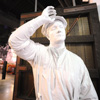
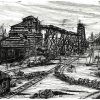
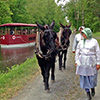
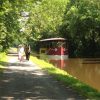

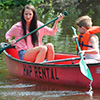
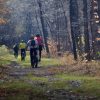
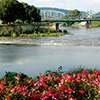

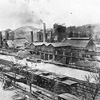
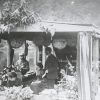
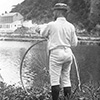
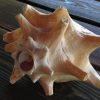

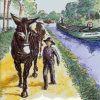
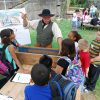

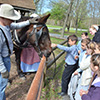


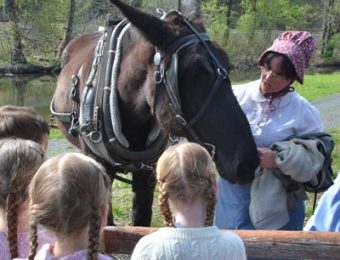
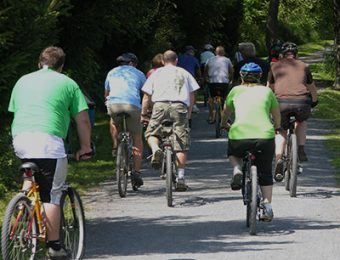
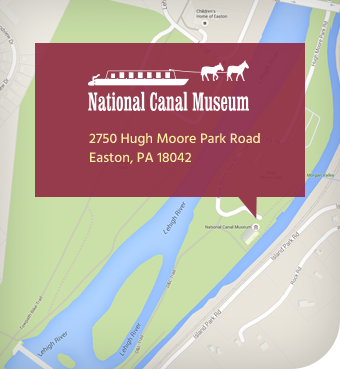
Join the Conversation!